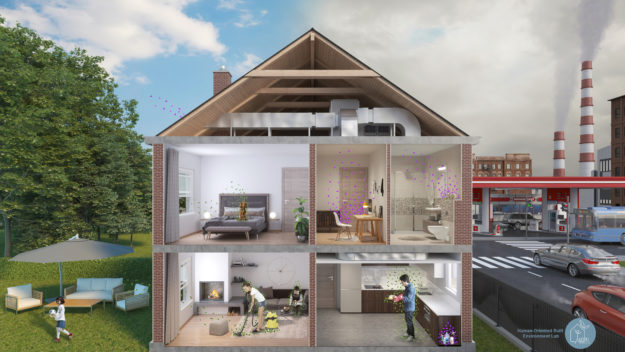Thinking beyond energy
Recently, we observed the emergence of “healthy buildings” movement. This emerged as a result of new research about the positive and negative impacts of indoor environmental quality (e.g., air quality, lighting, acoustics, thermal comfort) on human health and well-being, task performance and overall job productivity. These factors have inspired a new generation of building certification schemes focused on supporting occupant experience.
However, surveys in hundreds of green-certified buildings revealed that large percentages of occupants (up to 40-50%) are often dissatisfied with the quality of indoor environments. The question to be asked seems obvious – Why do we consume so much energy to operate our buildings, while providing relatively poor performance with respect to indoor environment, human comfort and well-being?
"Surveys in hundreds of green-certified buildings revealed that large percentages of occupants are often dissatisfied with the quality of indoor environments"
The origin of the problem
To answer that question, we need to look into the ongoing practices and challenges of the green certification schemes. Firstly, the leading green building certification schemes assign only ~10% of their rating value to criteria of indoor environmental quality, and typically allow projects to be certified with attention to building energetic performance only. Research has shown that among 100 certified case study buildings, most of them showed energy saving strategies, while high quality of indoor environment was observed only a few buildings. Secondly, majority of green certification schemes rely on conventional building standards for provision of indoor environmental quality. There standards usually have low targets, and they aim to minimize adverse health effects instead of promoting health and comfort of individuals. Among other issues, a problem with the existing green building schemes is absence of established protocols for performance testing of buildings, especially when it comes to indoor environment assessment.
Economic benefits
The economic benefits of healthy indoor environments are enormous. The people-related costs of poor IEQ can be thought of as either direct medical costs arising from health problems caused by the building, or indirect costs of reduced individual work performance. Various sources estimate that 80–90% of the costs of a building are associated with worker salaries, compared with only 3% being associated with owning and maintaining the property (including energy bills). In other words, healthy buildings are not expensive; but buildings that don’t pay enough attention to indoor environment and human comfort are.
"The economic benefits of healthy indoor environments are enormous"
Changing of approach
Switzerland should thus adopt a changing of approach from the avoidance of poor performance to promotion of the opportunities that support both energy performance and people’s flourishing and thriving in buildings. This way of thinking and acting should become the essence of the Swiss building renovation and green-certification strategies.
Column published in Le Nouvelliste in December 2021, written by Dusan Licina, assistant professor tenure track EPFL at the Human Oriented Built Environment Laboratory (HOBEL) at the Smart Living Lab, Fribourg
Contact

Dusan Licina
-heating, ventilation and air-conditioning HVAC
-health and comfort in buildings
Information
Human Oriented Built Environment Laboratory (HOBEL)
